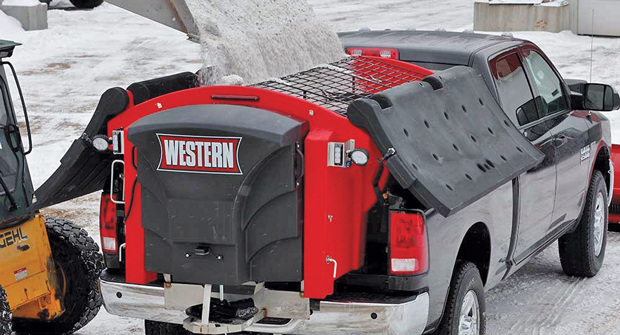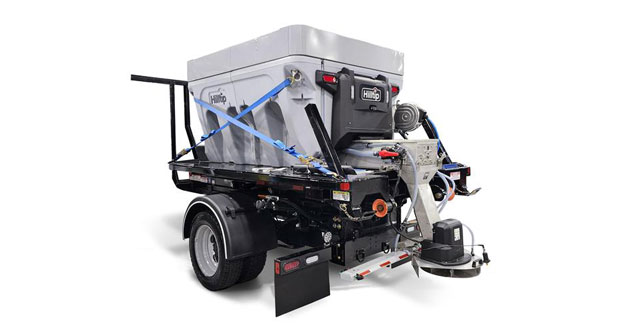
Most professional snow and ice management contractors agree it is a 365-day business. Operations ramp up in late summer to prepare for the coming winter. Part of this process is ensuring equipment is in top form. Here are some tips to make sure your salt spreaders are ready when meteorologists forecast winter’s first flakes.
It starts at the end
“If you don’t take care of the previous winter, you won’t be able to address the next winter,” says Charles Glossop, founder and CEO of Hantho Outdoor Services in Saint Louis Park, Minn. “You’ll have rust on the key components, you’ll still have rock salt in the unit and wiring connections that are, at best, in poor condition.”
An essential facet of putting spreaders into summer storage is to remove salt and wash each unit thoroughly, says Chris Pegnia, chief visionary officer at Busy Beaver Lawn & Garden in Hamburg, N.Y.
“We spray all of the units down with a biodegradable product designed to remove all of the salt residues, and we assess each unit and fix anything that’s broken or worn before it’s put away for the summer,” says Pegnia. His service portfolio is around 65 percent commercial snow and ice management, 25 percent landscape maintenance and 10 percent landscape construction.
Preventive measures
Brandon Barker, general manager at J. Barker Landscaping Co. in Bedford, Ohio, says the fleet mechanic meticulously inspects each salt spreader — both tailgate and hopper spreaders — before returning them to winter service.
The mechanic replaces hoses and couplers as needed and regreases everything for the coming winter season. He inspects augers for damage and checks connections on the spinner motors to ensure they’re clean with no leaks.
“All of our couplers are in a Ziplock bag with grease inside during the off-season to ensure they are staying lubricated,” Barker says, adding J. Barker Landscaping Co.’s overall service portfolio is about 35 percent commercial snow and ice management, 25 percent lawn care/lawn maintenance and 40 percent design/build.
As part of Busy Beaver Lawn & Garden’s preventive maintenance process, Pegnia replaces all the units’ ball bearings and electrical connectors with marine-grade connectors.
“You can source these parts off Amazon, and it’s inexpensive when you consider what it will cost you if you don’t replace them and your salter breaks down mid-event,” he says.
Calibration
Proper salter application rates are essential for material cost savings, slip-and-fall mitigation and more. Pegnia recalibrates each spreader at the start of each season and then monthly once the season begins.
“We’ll load the spreader with a yard of salt, which we know the weight of,” he says. “And we know the truck’s weight when it’s empty. We’ll run the rock salt through and time it out. We then run the numbers to ensure it’s running out of a yard (of rock salt) at a calibrated weight. It’s a bit of an old-school way of doing it, but it’s effective.”
Training is key
Glossop, a veteran snow fighter whose company does about 55 percent commercial snow and ice management, 20 percent landscaping, 20 percent maintenance and around 5 percent residential lawn care, recommends devoting at least a full day to equipment training, which includes going over every facet of a salt spreader or liquid brine unit’s operational components.
“These units are becoming more and more (technologically) sophisticated, so we need to make sure that (operators) understand how to use them correctly, how to calibrate them so the correct amount of salt releases and how to troubleshoot minor maintenance issues so you don’t have to travel back 20 miles to the shop for a minor repair,” he says.
Glossop also stresses safety during preseason training.
There are different types of salt spreaders — gas drive, hydraulic and electric — and all of these units have some form of back pressure, even when they’re not in operation,” he says, “Those augers will take your hand off if you don’t have the unit totally shut down. And if you put your hand into the auger to clear some blockage, that auger will jump when that back pressure is released.”

